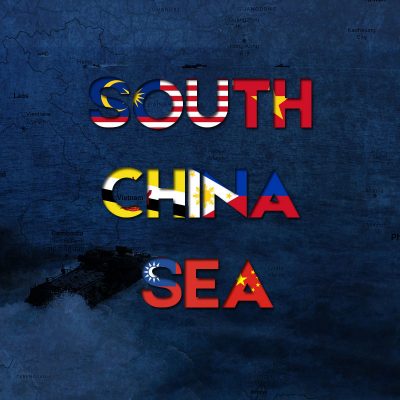
The article, doubed “China’s Artificial Islands in South China Sea – Review“, appeared at our website on July 7. Its opening analysis says:
China is actively building artificial islands in the South China Sea, turning them into military and logistical bases. Beijing already has at least seven such bases, equipped with access channels, helipads, radar facilities, gun and missile emplacements, piers, military facilities and other objects of strategic importance.
China’s government had started its land reclamation and construction efforts on the reefs in early 2014. The main reason for such actions by China, is the US intention of controlling international trade in the Indian Ocean and the Pacific or even monopoly of trade control in those waters. The US strategists are concerned about the rise of Chinese naval forces and Chinese expansion in the Pacific Ocean. Particularly, they aimed to prevent a situation where China will be able to defend particular zones of sea communications from foreign intervention. The U.S. strategic purpose is to seal off the PLA Navy in the South China Sea and in limiting its operational freedom of movement and allow for the encirclement of China by land.
Building up the reefs in the South China Sea, China pursues multiple objectives, including ensuring the safety of expanding shipping lanes, extending maritime protection to its regional waters, and developing capabilities to conduct non-conventional security operations outside the region. The PLA Navy has sufficient self-defense capabilities, but deficiency in cross-region operations and force projection is evident, thought Beijing is trying to change that.
However, not everyone agrees with this explanation of China’s goals in the region.
Unlike the mainstream media, SouthFront appreciates discussions and various views on the comlex issues of the modern geopolitical situation around the world. This is why we decided to release additional remarks in a separate post in order to allow the audience to take a wider look at the situation.
SouthFront’s Analyst Brian Kalman provides additional analysis and critique of the original article:
- Land reclamation and sovereignty reinforcing operations through establishing habitation/military operations on a number of disputed atolls and reefs began largely in 2014, but the push to establish “sovereignty” over these areas began many decades prior (late 1970s and 1980s), with the exception of the Scarborough Shoal, which was quite different due to the clear chain of sovereignty involving the United States.
- China does not aim to “control” the key international shipping lanes that run through the geographic, and strategic bottle-neck of the South China Sea, but to be able to deny control of this strategic shipping lane to any other regional or global power. They aim to keep the lanes open and neutral. The aim is to keep the lanes open at all costs, regardless of politics or open warfare in any part of the world. As a majority of trade that transits the South China Sea involves Chinese exports in both an easterly or westerly direction, the maritime region is of clear strategic importance to China. International trade, in the form of exports to most of the globe, allows for the continued economic growth and stability (and the political and social stability) of the nation. Imperial Japan (ironically) faced a similar challenge from the United States in the decade prior to the Second World War. This was a major factor that influenced Japanese strategic planning that determined war with the United States in 1941.
- China aims to be able to immediately acquire A2/AD over the entire South China Sea and East China Sea if and when the geopolitical/military situation deems such a need necessary. The island bases are strategically located so as to help establish A2/AD coverage over the entire South China Sea. Scarborough Shoal will effectively close the region and establish total A2/AD coverage; however, this has yet to be accomplished. The ruling of the Permanent Court of Arbitration (PCA) will have a great deal of influence on the future actions of both China and the U.S. on how the South China Sea dispute will progress…
- Establishment of bases on the islands alone accomplishes nothing. The establishment of long range radars, airstrips, and naval support and replenishment has been planned in conjunction with mainland based A2/AD capability and naval warfare modernization and expansion for decades. This has been decades in the making, and exhibits multi-faceted, long term strategic planning.
- The United States aims to limit the freedom of action and independence of any nation in the region, especially a global rival such as China. The U.S. is practicing the timeless strategy of “divide and conquer”, and will play regional powers off one another, most importantly China, so as to keep them all weaker than the U.S. (both singularly and in confederation). The best strategy of all regional players is to negotiate a confederation of Asian nations that protects their collective economic and security needs, independent of American and European influence.




